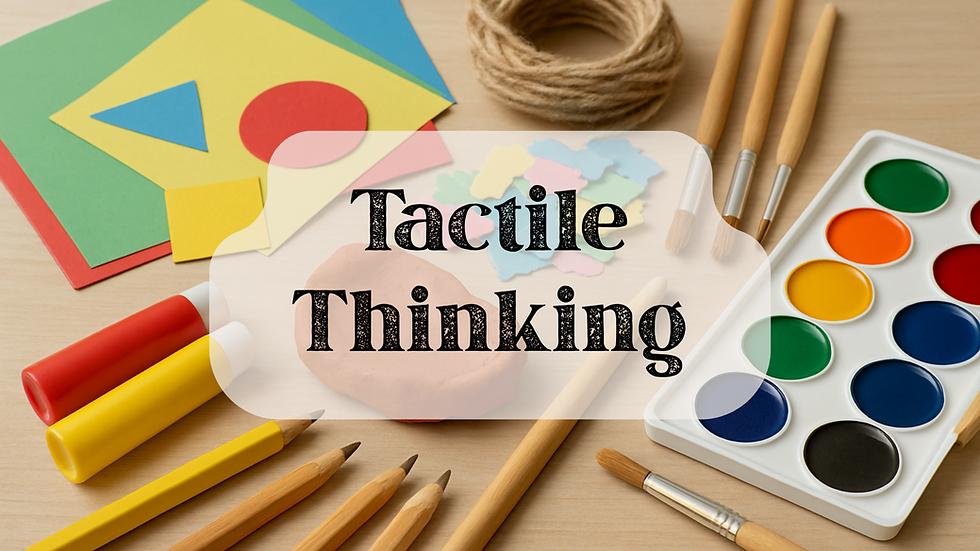Using Arts and Crafts to Unlock New Solutions at Work
- Brandy Prettyman
- Aug 14
- 3 min read

We often think of problem-solving as something that happens behind a desk or on a screen. But some of the most effective breakthroughs come when we step away from the digital and return to the physical.
Tactile thinking — the act of using our hands to engage with materials — activates different parts of the brain and gives us access to new ways of thinking. In the workplace, this can mean stronger ideas, more innovative solutions, and teams that are less afraid to try something new.
At Indigo Cottage Crafts, we’ve seen how a hands-on approach to creativity can serve as more than just a break from routine. It can actually help people think better.
What Is Tactile Thinking?
Tactile thinking involves engaging with the world through your sense of touch. It includes handling materials, manipulating shapes, and physically building something. This kind of interaction helps the brain process information differently than when we work solely through words or data.
When employees are invited to participate in creative, hands-on tasks, they become more open to experimentation, less rigid in their thinking, and more willing to take calculated risks.
Why Hands-On Experiences Work
Traditional brainstorming can feel limiting, especially for visual or kinesthetic thinkers. Asking a team to solve a challenge by writing on a whiteboard or typing into a shared doc may not yield the depth of thinking you want.
By comparison, giving people access to simple creative tools like modeling clay, collage materials, or even LEGO bricks can allow them to externalize abstract ideas. When people build with their hands, they often uncover insights they didn’t know they had.
This isn’t just anecdotal. Research in design thinking and embodied cognition shows that physical interaction with objects helps the brain build mental models. That means more imaginative problem-solving and more nuanced solutions.
Tactile Exercises That Encourage Innovation
You don’t need to transform your office into an art studio to harness the power of tactile thinking. Here are a few simple activities that can support better problem-solving:
Mind Mapping with Materials: Instead of writing ideas in a notebook, use colored paper, string, and small objects to represent different ideas and their relationships.
Build-the-Solution Challenges: Ask small groups to physically model their proposed solutions using whatever materials are available — even office supplies.
Concept Collage: Provide magazines, scissors, glue, and a creative prompt. Ask teams to create a visual representation of a challenge or opportunity.
Silent Solutions: Give everyone a block of clay and five minutes to silently sculpt an idea they have for solving a problem. Then go around and discuss.
These kinds of exercises unlock a level of creativity that is difficult to reach in a purely verbal environment. They also shift group dynamics, allowing new voices and ideas to emerge.
Creating a Culture of Exploration
When you introduce tactile thinking into your workplace, you send a message that exploration is valued. You create space for team members who may not be the loudest in a meeting but are often the most thoughtful. And you offer everyone a chance to learn by doing, rather than just talking.
Innovation does not always come from looking harder at a screen. Sometimes, it arrives through the feel of texture, the layering of color, or the quiet focus of working with your hands.
Final Thought
Incorporating arts and crafts into the workplace is not about creating art for art’s sake. It is about giving teams new tools for thinking, collaborating, and discovering better solutions together.
Whether you’re tackling a strategic pivot, reimagining a workflow, or simply looking for fresh perspectives, consider what might happen if your team had access to more than just a keyboard. The answers might be right at their fingertips.




Comments